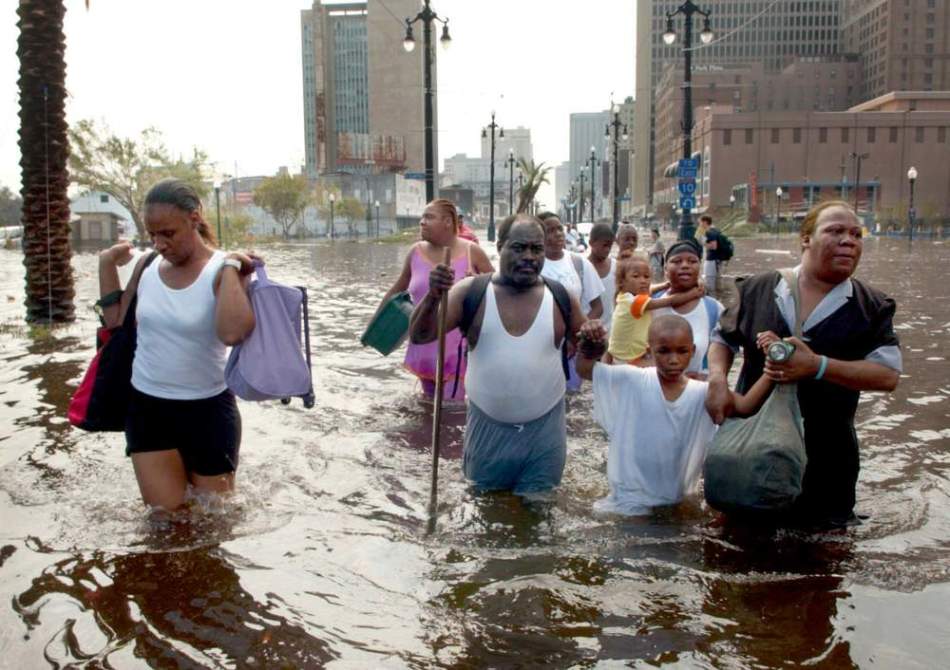The Entry
I can hardly wait to interview Lori Nelson for a story, but I didn’t want to wait a day longer to post if only a brief note on her remarkable appointment. Ms. Nelson just replaced Dr. Atyia Martin as Boston’s Chief Resilience Officer, under the city’s membership in the Rockefeller Foundation’s 100 Resilient Cities initiative.
Mind you, Dr. Martin was remarkable in her own right, as a glance at the Resilient Boston plan she led can attest. If you haven’t read it, please do.
Boston, as much as if not more than any other city member of the 100RCs, chose to place social equity as high as if not higher than any other single issue in its relevance to climate resilience.
And within social equity, the city took the bold, truly unique step of placing racial equity at the very heart of its strategy, arguing, correctly, that race-related gaps represent an underlying stressor that must be solved for the city to be resilient across a broad range of issues.
“As the city prepares for major shocks, such as extreme weather events, and addresses ongoing stresses like economic inequality and aging and inequitable transportation infrastructure, the lens of racial equity helps integrate these complex and interrelated issues in order to make the city stronger for all residents,” said 100RC President Michael Berkowitz in his introductory letter to the Resilient Boston document.
The department, in fact, is now called the Office of Resilience and Racial Equity. How’s that for bold. And whereas Dr. Martin’s background is centered on public health and homeland security — perfect, as it turned out, to set up the office, assemble the plan and team, and set things off to a fast start — Ms. Nelson has spent the bulk of her career on community engagement and racial justice, as The Story below details.
Most 100RC CROs, by contrast, hail from city planning, engineering and fields related far more to physical resilience — infrastructure, urbanism, buildings, that kind of thing. So when Berkowitz says in his letter that Boston’s “[brand] of engagement has led to some of the most innovative initiatives we have seen in our global network,” he ain’t kidding.
Nelson has been active in the Boston Chapter of the NAACP, and wouldn’t you know it, it was the NAACP that three years ago — ten years after Hurricane Katrina sparked a national conversation about the connection between climate, race and inequality — penned what is perhaps the most useful quick guide yet written on the matter.

Here’s the link, which I got from this December 2017 report on the state of the adaptation field. It positions resilience as intersectionality on steroids — a whopping 76 social vulnerabilities across 13 categories (housing, jobs, food, mobility, health, etc.) that absolutely must be addressed by every adaptation team for a city and country to be optimally resilient.
And it didn’t stop there. The NAACP guide lists an additional 80 outcomes and processes that must be secured at the same time, across 14 categories that combine physical and human to-do’s, to create resilience not just against today’s climate risks, but crucially tomorrow’s, as well, with climate change now sure to produce ever-worsening and more frequent disaster disruption from now on.
The report, in sum, is a keeper, particularly for city resilience leaders like Nelson who must attack adaptation on all fronts, physical AND human. That’s what she and I will talk about when we have our sit-down. For now, here’s more on her foray into the climate fray.
The Story
New City of Boston Chief Resilience Officer
Press announcement by the Mayor’s Office. 2 May 2018.
Postscript
This story coincides with the failure of the latest round of negotiations on the Paris Climate Agreement in Bonn, Germany. The irony must not be lost on anyone, because here we are talking about social and racial equity in this story, and the Bonn talks bogged down, as most UN climate summits have gotten stuck, over equity differences between developed and developing countries.
Just like low-income communities are more exposed to natural disasters, and their chronic vulnerabilities in turn worsen the impact of those extreme-weather hits — with the added injustice of not having contributed anywhere near as much to the crisis as their wealthier compatriots — so too are poor countries.
In Boston as in every developed-country city, disadvantaged communities struggle for a fair allocation of resilience funds and resources to compensate for those structural inequities. In UN talks, developing countries and cities do exactly the same.
In Bonn, they failed to secure what they need, and a new one-week round was scheduled for Bangkok, Thailand, in September. The stakes cannot be higher. At issue is a rulebook to guide every country’s implementation of national commitments agreed to in the Paris Climate Accord. The rulebook is supposed to be adopted this December at the regularly scheduled UN conference in Katowice, Poland. But developing countries threaten to scuttle that exercise unless agreement is reached in Bangkok on equity.
A highly vulnerable river community in Bangkok is where that gentleman is rowing his boat in the featured image that opens this story. You can easily see in the photo many of the vulnerabilities highlighted in the NAACP report for resilience officers to address. The authors had America in mind, like local authors of similar reports in every country on Earth.
Equity, though, knows no borders. It is at the heart of resilience…everywhere.

0 comments on “The equity lens and its surprising scope”